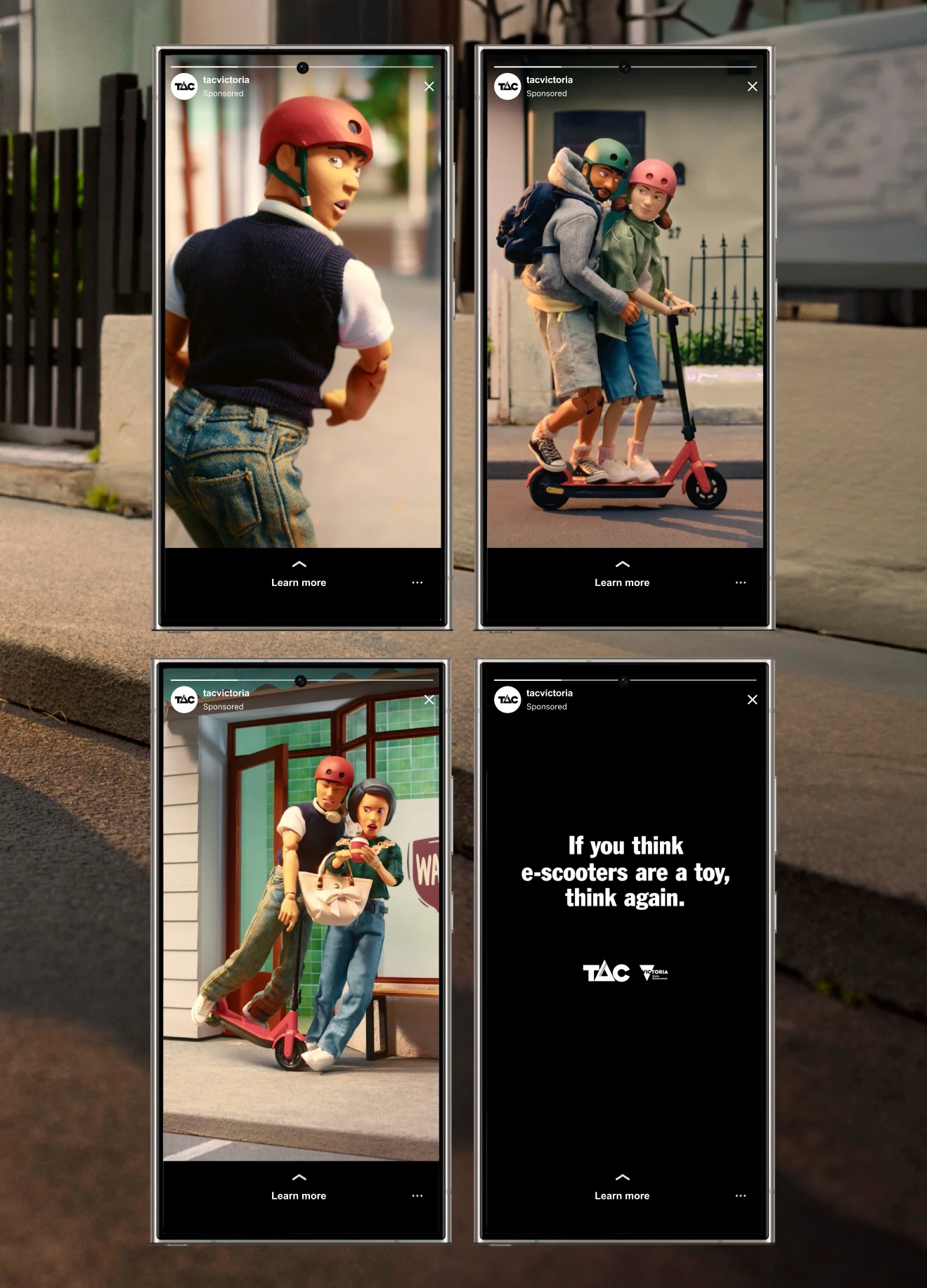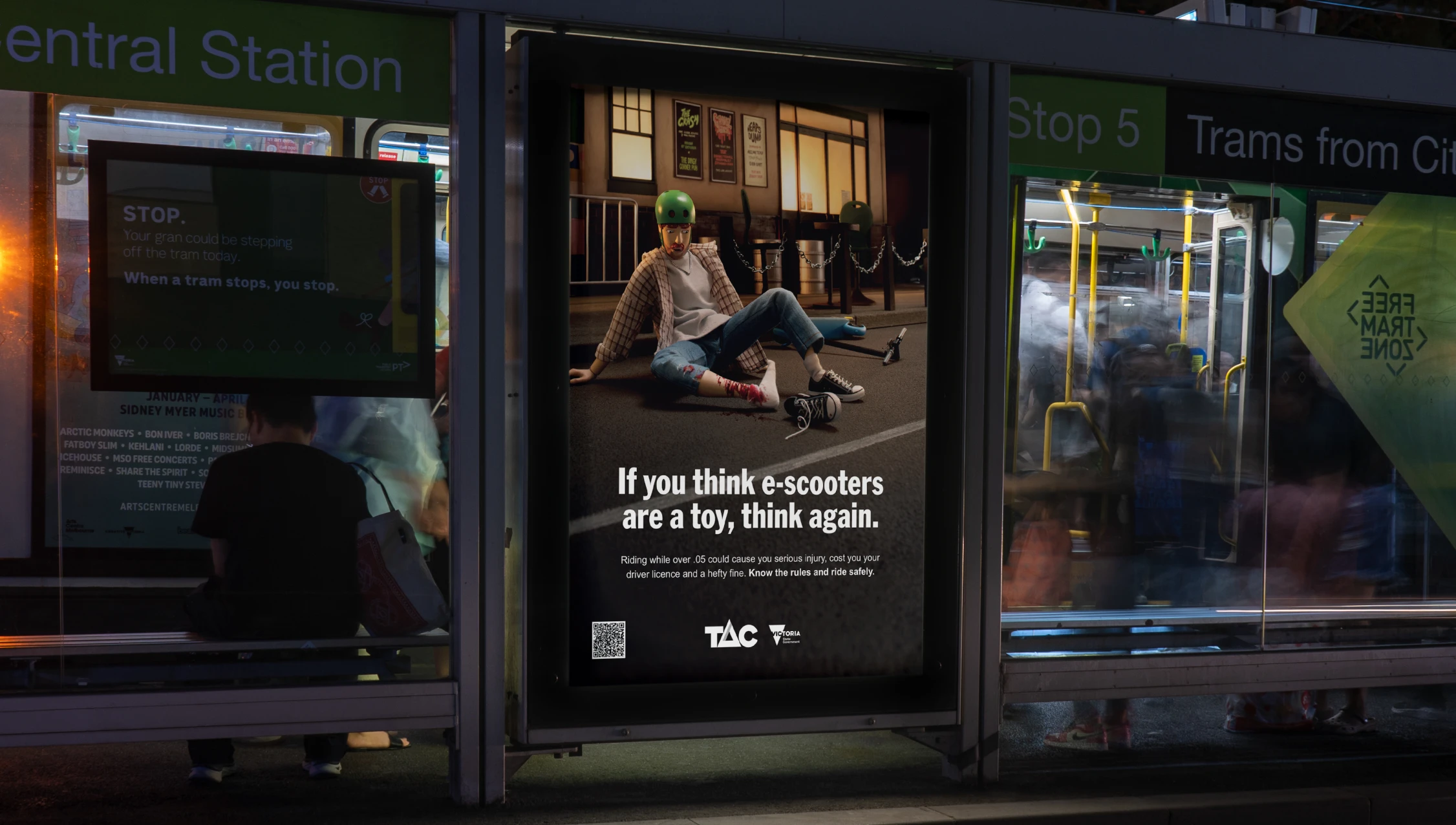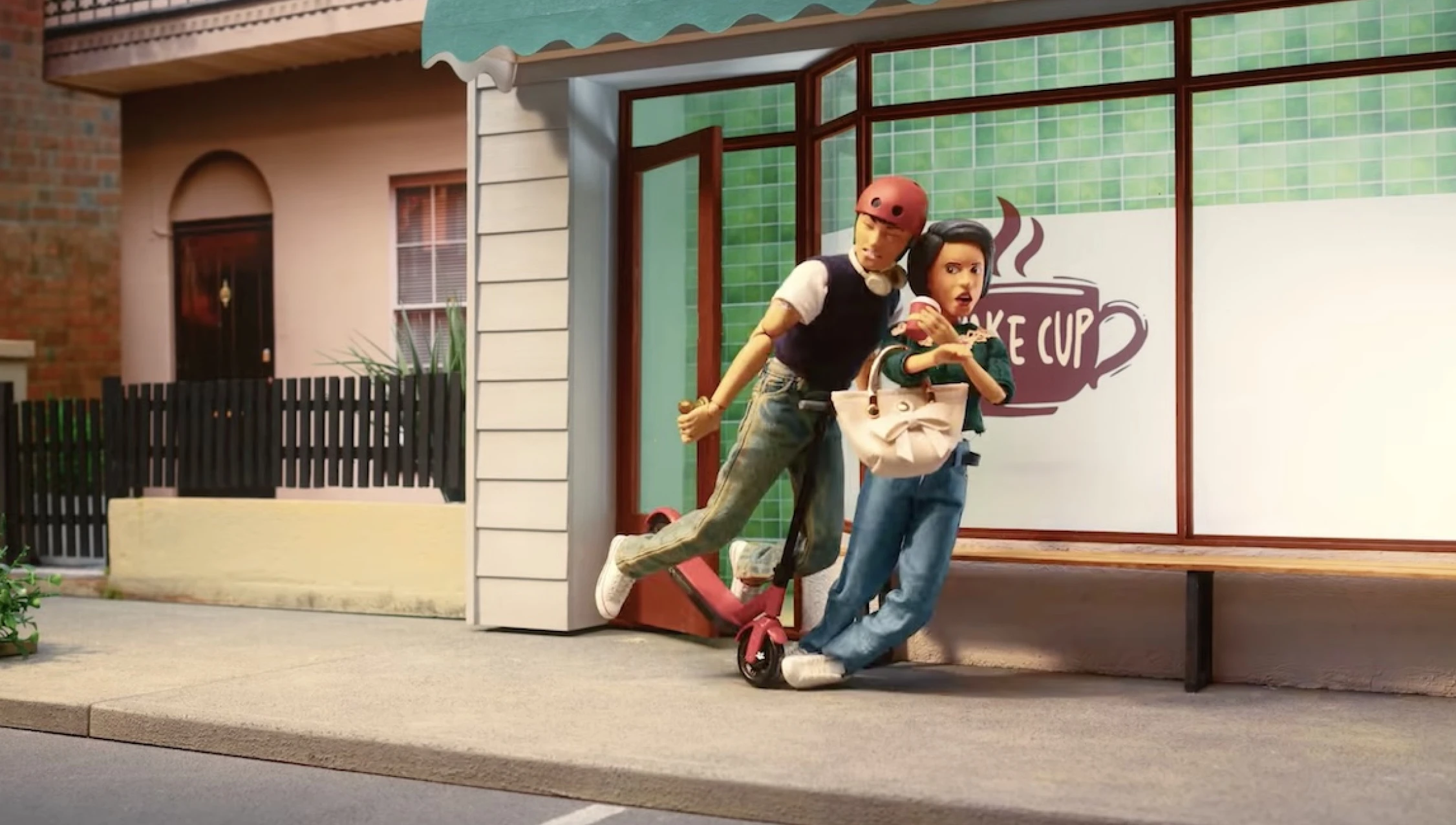
Fun, fast and convenient — e-scooters are rapidly growing in popularity across Victoria. In 2024, new legislation passed making e-scooter share schemes a permanent fixture. But as e-scooters became more prevalent, so did the risk of injury and hazardous behaviour, with related hospitalisations more than doubling.
Our research revealed a key piece of language underpinning the problem. Online discussions described e-scooters as a fun new "toy." And because it's a toy, it's all fun and games—until someone gets hurt. This insight led us to a breakthrough approach.
Traditional fear tactics or parent-to-child messaging wouldn't cut through with our young male target audience. We needed to disarm viewers and force reappraisal rather than talk down to them. By turning to the semiotics of traditional toy advertisements, we could create a surprising twist in toy logic that would jolt riders out of their false sense of security.
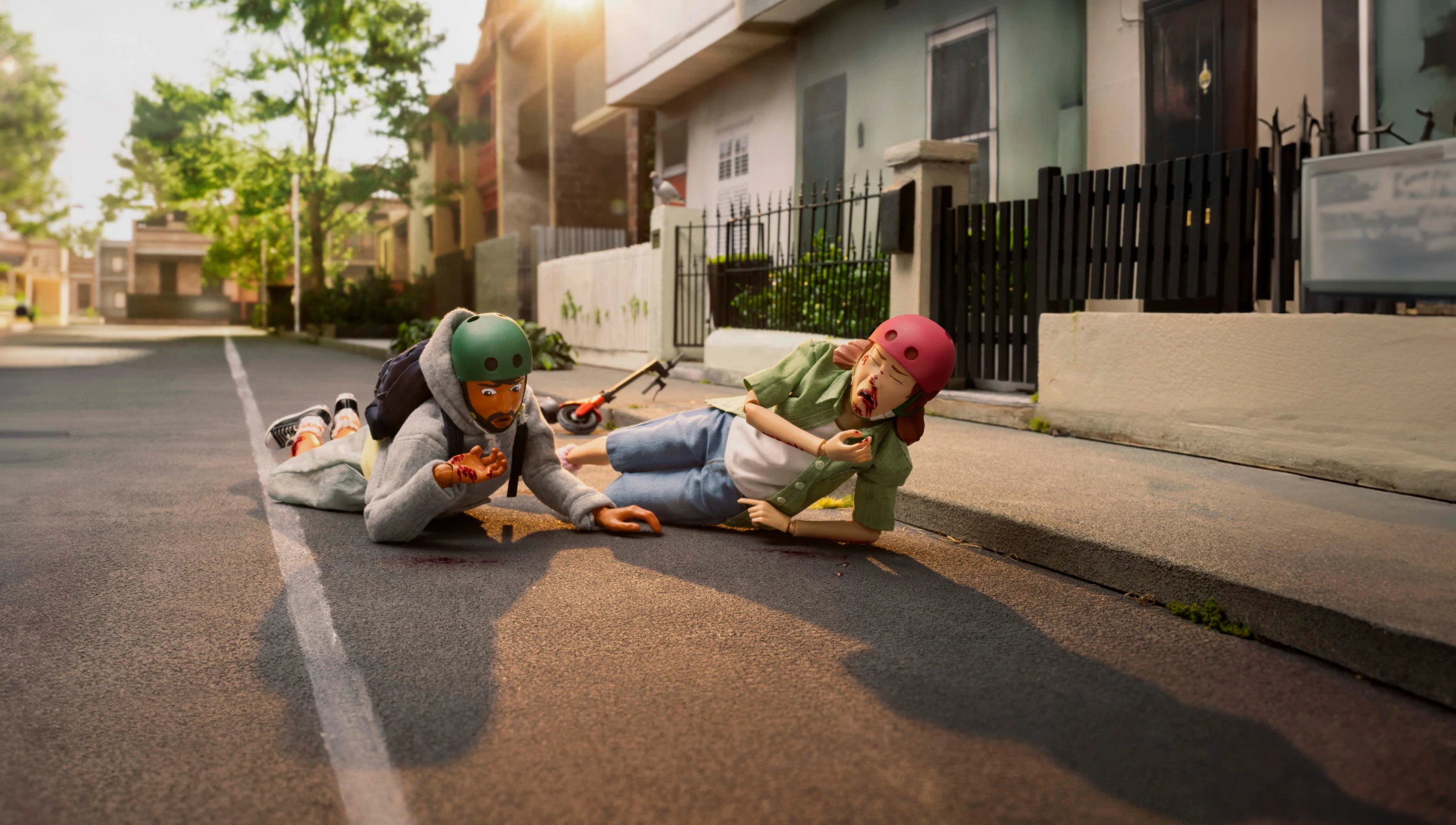
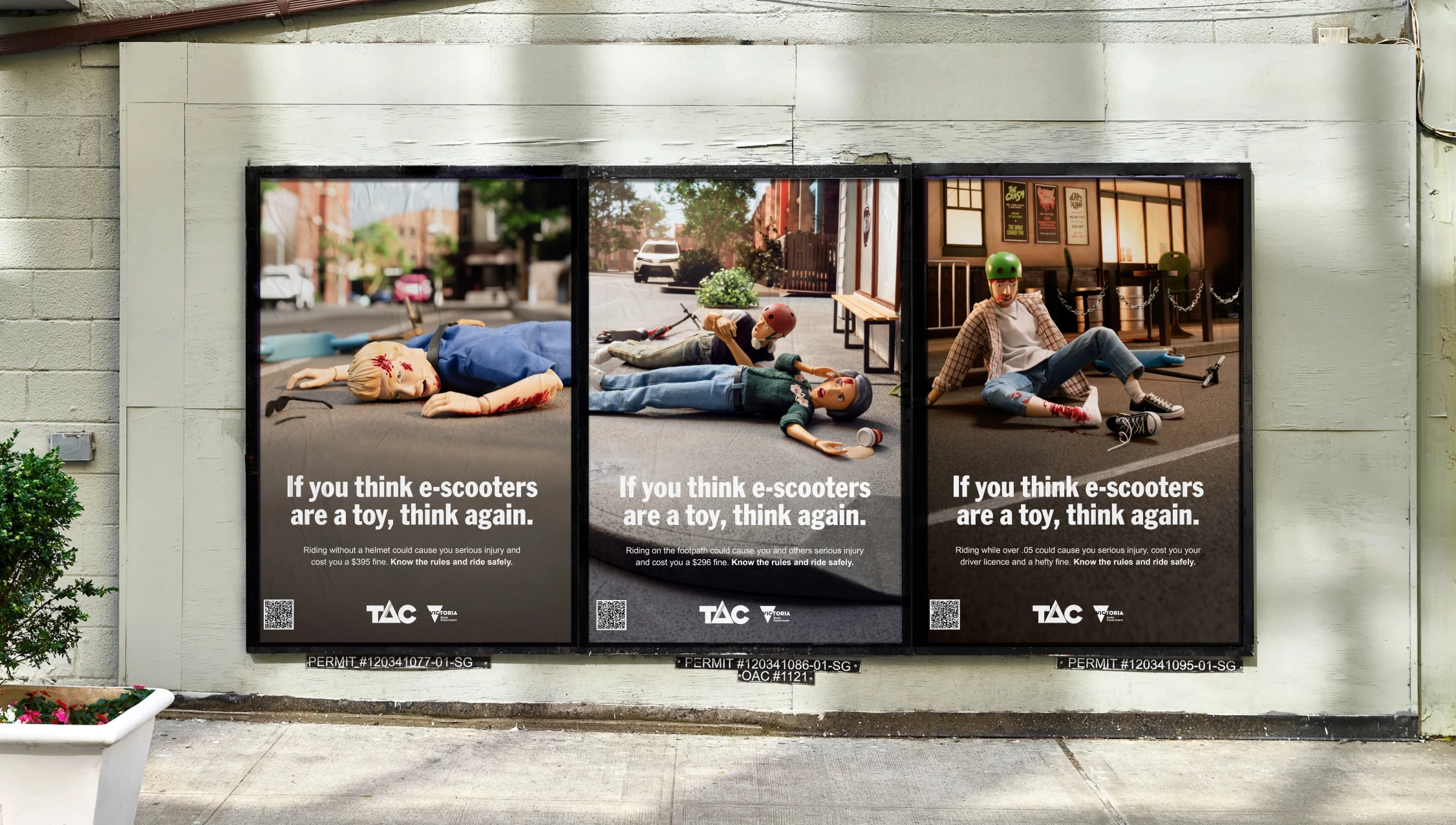
We created a campaign that deployed a jarring transition between the "toy world" where dangerous riding behaviour takes place and the "real world" consequences of personal injury or harm to other road users. This allowed us to tap into loss aversion in a fresh, unexpected way.
The approach created a distinctive bias for the TAC, an organisation famed for its devastating, at times gruesome, real-world advertising. Victorians weren't used to seeing toy-like animation and stop-motion coming from the TAC. Meanwhile, deploying other tropes from toy advertising—catchy jingles and hyperbolic sound effects—created a bait-and-switch effect, aiding emotional priming and making people double-take.
